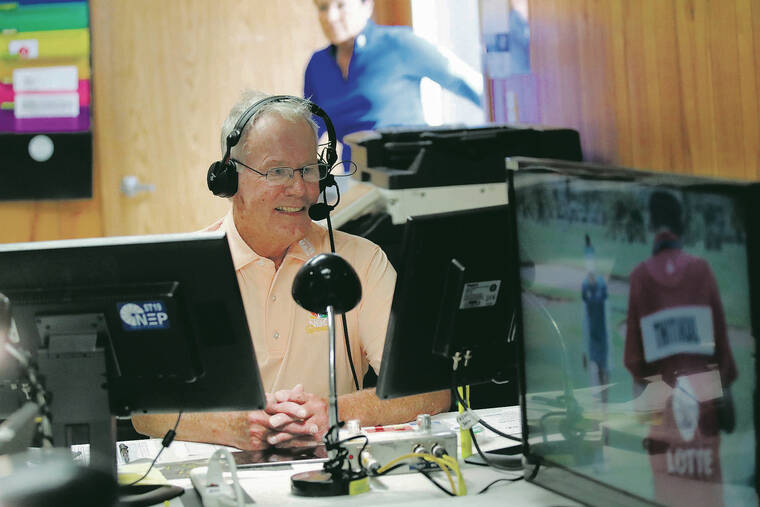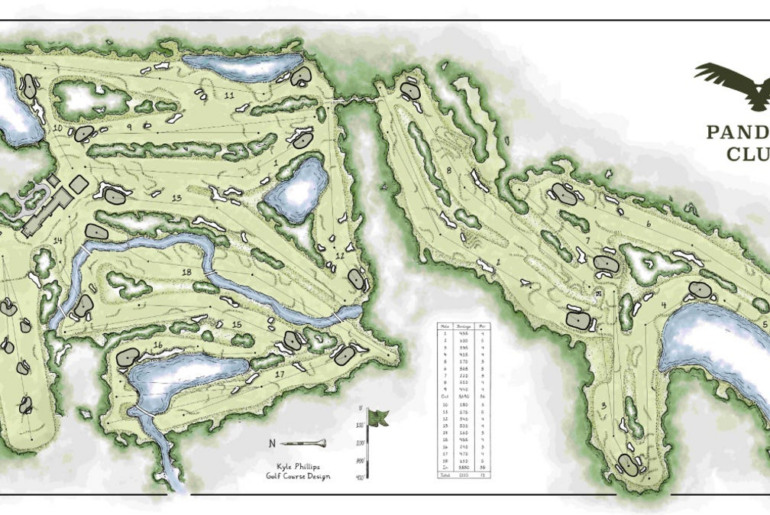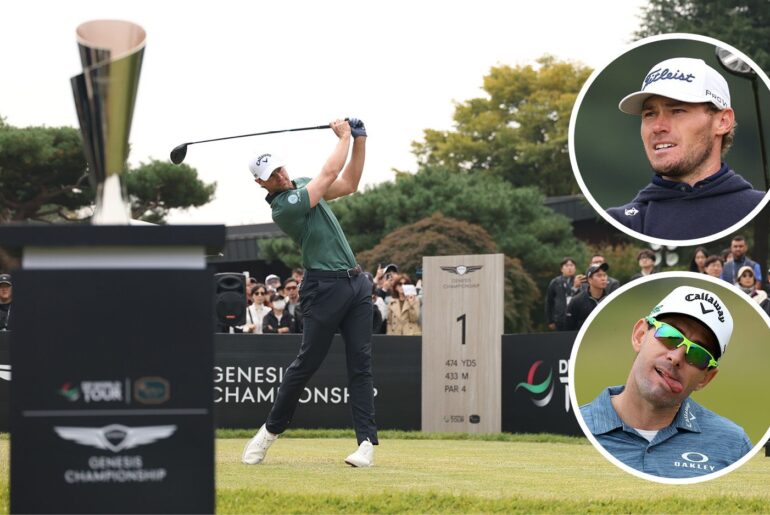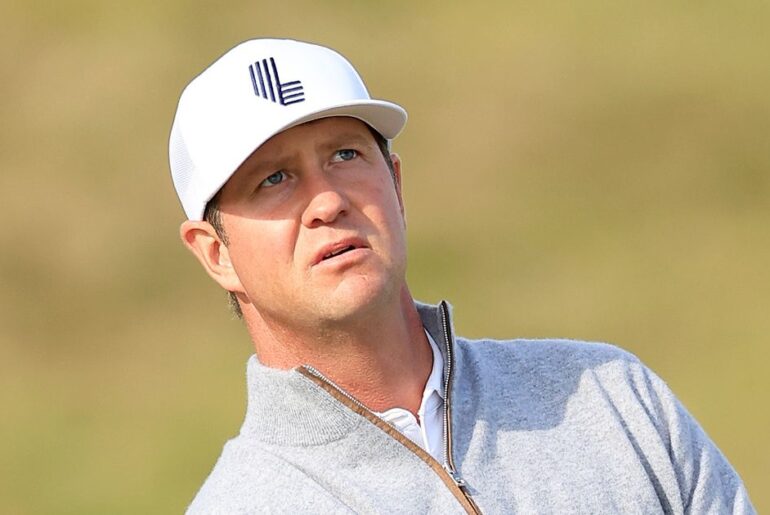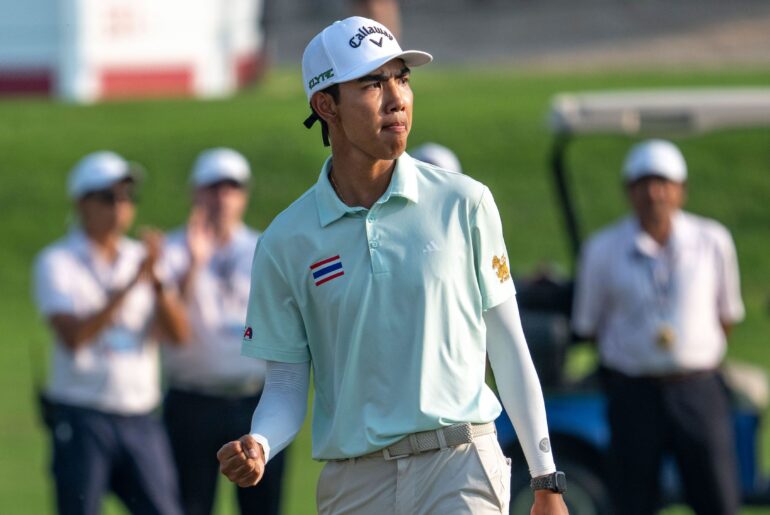Mark Rolfing might sound like an alarmist when he calls this situation “dire.”
But the more you know about the possible future or lack of one for the PGA Tour in Hawaii, the label of realist seems more appropriate.
It’s easy to see how the absence of The Sentry at Kapalua in January could become permanent, and potentially further cripple or even bring an end to the PGA Tour’s presence in Hawaii, which goes back to the first Hawaiian Open at Waialae Country Club in 1965.
We know why this matters to Rolfing. Golf — especially in Hawaii and on Maui — has been his life’s work since 1975, when he was a young club pro at Kapalua, and eventually led to widespread acclaim for his role as a TV golf analyst.
And there’s that other big part for all of us here, the one about him leading the development of the sport’s presence in Hawaii. At one point in the 1990s, the state hosted 11 pro tour events a year on four islands — all televised.
Now it is down to four, or three, depending on if you include The Sentry, which the PGA Tour said last month will not be held at Kapalua because of the course’s condition due to an ongoing drought on Maui and conflicts over available water.
Don’t miss out on what’s happening!
Stay in touch with breaking news, as it happens, conveniently in your email inbox. It’s FREE!
Why does this matter to the rest of us, whether we love golf or not?
That’s the one easy answer in a scenario otherwise bereft of them. When we talk about golf and Hawaii, we are talking billions of dollars — $3.4 billion a year.
The golf industry makes an annual direct economic impact of $1.8 billion, as well as $1.6 billion “from indirect economic impact from core industries,” according to the 2024 Hawaii Golf Economic Impact Report, prepared by the Aloha Section PGA of America, and verified by the state’s Department of Business and Economic Development and Tourism.
Does that all go away if longstanding pro events on Maui, Oahu and Hawaii Island become a thing of the past?
No, not all. But it would be a major hit.
“The televised PGA, LPGA, and Champions Tour events held in Hawaii broadcast the state’s golf prowess globally, catalyzing tourism,” according to the report cited above. “Furthermore, numerous annual events hosted at the state’s golf courses serve as crucial fundraising platforms for local charities and foundations.”
That’s where Rolfing, 76, played such a huge role and will now to try to keep it going.
Through his marketing expertise and work with the Hawaii Tourism Authority, Rolfing was a major player in building this. It got him into the Hawaii Golf Hall of Fame in 2000.
Rolfing said the next 10 weeks are crucial to the future of golf in Hawaii, and he will do whatever he can to regain The Sentry at Kapalua and retain The Sony Open in Hawaii, as well as PGA Champions Tour and LPGA events.
He said the most important of the first steps, though, is in Gov. Josh Green’s court. If he hasn’t yet, Green should meet with TY Management (owners of Kapalua) and Maui Land & Pineapple to resolve legal issues over irrigation at Kapalua, he said.
“I don’t believe The Sentry being played on Maui is plausible for ’27 until water is resolved. Litigation has to be stopped and solved. The governor has the best chance of doing that,” Rolfing said. “The governor needs to get them in a room, close the door and say, ‘Fellas, we’re not gonna open the door until we get this figured out.’ It’s beyond the golf. That has to happen and happen soon.”
Meanwhile, Rolfing will reach out to key people — especially Tiger Woods and the new CEO of the PGA Tour, Brian Rolapp — to get an idea of how they view Hawaii in the Tour’s future.
Rolapp named Woods the chair of the Future Competition Committee in August. Its mission is to examine all of the Tour’s formats and scheduling, aiming for “the optimal competitive model that enhances the PGA Tour’s value to fans, players and partners,” according to the Tour.
“Tiger never played Waialae, but he played Kapalua, and he loved the Grand Slam on Kauai,” Rolfing said. “I think Tiger will support history, and the idea that you can’t just walk away from tradition.”
This could, however, be complicated by Woods’ heavy involvement with TGL, the indoor golf league that starts its second season in January, with teams comprised of some of the biggest draws in golf.
Roloff’s most recent previous job title was executive vice president of NFL Media and CEO and president of the NFL Network.
“The biggest concern moving forward is scheduling,” Rolfing said. “That will go a very long way in determining whether the PGA Tour can stay in Hawaii for one or two events.
“The NFL has 17 regular-season games. I’ve heard (Rolapp) say he believes creating scarcity creates demand,” Rolfing said. “When I hear that, it makes me think changes at the beginning of the year, because that’s when there is the most flexibility. The Masters, the U.S. Open are set (in April and June). The big changes can happen at the beginning and end of the year. Where would two (events in Hawaii) fit, or maybe one?”
Rolfing also hopes to mobilize star players who have aloha for Hawaii, he said.
“We have a group of players starting with the Kapalua group that are really true friends of that tournament and the people who come to it. A lot of that folds over to Sony. If you ask Justin Thomas he will say one of the most important things for him was starting in Hawaii, where he won both (tournaments). Jordan Speith loves Hawaii for what it is. Then there’s Ernie Els, Tom Lehman, guys like that. I think the players can be an influence.”
January’s tournament is the final one in Sony’s contract with the Tour, another major concern.
“Apparently, Sony is not responding to the sensitivity of what is going on here. This is the latest that Sony has gone with not re-upping (since becoming title sponsor in 1999). Typically they do four-year deals,” Rolfing said. “I’m sure one of the issues is they want to see what happens with Sentry.”
Now that the Sony Open in Hawaii is the season’s first tournament, some changes from business as usual are needed at Waialae, Rolfing said.
”It’s a private club, so it is typically closed and not accessible the week of The Sentry. That will have to change. If you have these players coming off of break, coming all the way to Hawaii, you have to convince them to come and that they will have the best experience. For example, you can’t tell guys coming all the way from Florida they can’t practice on Monday because of a pro-am,” he said. “Other facilities around the island have to open their arms a little bit, too.”
In its January spot, the Hawaii Swing has competed for viewership with the NFL playoffs. Hawaii also competes with tournaments on other tours and now the TGL for the attention of the players as they plan their schedules.
The days are gone when Hawaii hosted so many golf events the broadcast equipment could be stored in Pearl City instead of requiring expensive five-week roundtrips on a barge.
Rolfing knows that, but it won’t stop him from trying to stake out a place for Hawaii on a PGA Tour that might be very different, very soon.
“I think now, the next two-plus months are going to be critical here. The two biggest issues are the water and the Sony Open,” he said. “I am going to focus on becoming proactive in the discussion going forward.
“It all points me back to getting aggressive. January of 2027 is only 14 months away.”

